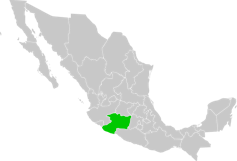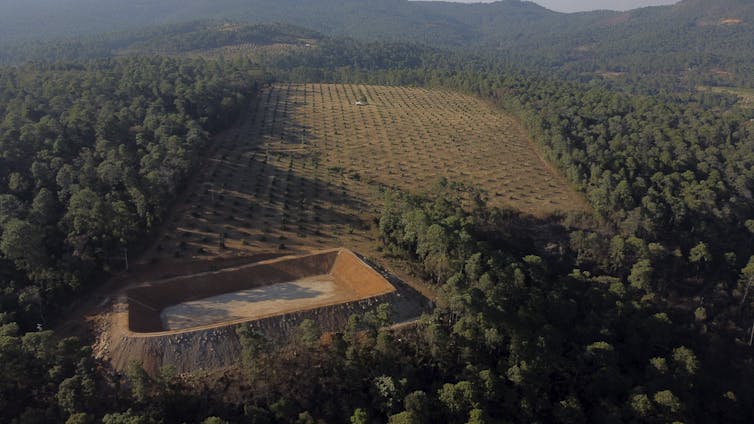The affection that consumers in the United States have for avocados appears to be limitless. From 2001 to 2020, the national consumption of this fruit, which is rich in healthy fats, tripled, reaching an annual average of more than 8 pounds per individual.
The southwest Mexican state of Michoacán is the source of approximately 90% of those avocados. Intensive avocado production is causing substantial environmental damage, as is the case with other foods that have become popular, such as acai berries, or that are extensively used, such as palm oil.
My research on the environmental history of 20th-century Latin America investigates the impact of the transnational movement of people, commodities, and agricultural technologies on the rural landscapes of the region. I am currently in the process of composing a book that delves into the evolution of a global avocado industry that is concentrated in Michoacán, the world’s largest avocado-growing region.

My research indicates that the cultivation of avocados is economically advantageous for producers in the short term, which are typically medium-sized operators and agribusinesses in Latin America. It also benefits growers, who are individuals in rural areas who cultivate subsistence commodities. However, the land, ecosystems, and water supply of Michoacán are gradually impacted by each serving of avocado toast. The impacts are most acutely felt by rural producers, who lack the resources of large-scale farmers.
The environmental consequences of monoculture
Thanks to its temperate climate, abundant rainfall, and deep, porous volcanic soils that are abundant in potassium, a critical plant nutrient, Michoacán is the sole location on Earth that cultivates avocados year-round. Monocultures are never environmentally sustainable, even under favorable conditions.
The introduction of homogeneous, high-yielding plant varieties results in the abandonment of native crops by cultivators. This reduces the availability of sustenance and renders the local ecosystem more susceptible to threats such as pest infestations. It also results in the erosion of fertile soils and the increased use of agrochemicals.
Deforestation can also be facilitated by monoculture. Avocado production is believed to have contributed to the annual eradication of 2,900 to 24,700 acres of forests from 2010 to 2020, according to Mexican officials. Additionally, it necessitates substantial resources: Avocado trees are a threat to the water resources of Michoacán, as they utilize four to five times more water than the native pines, which are used for human consumption.
Raised in California
Avocados have been a staple of the Mexican diet since ancient Mesoamerica; however, the Hass variety, which is the most widely cultivated global, was developed in contemporary California.
In the late 19th century, scientists from the U.S. Department of Agriculture undertook a mission to gather and transmit samples of food plants from various regions of the globe. The objective was to cultivate and adapt these plants in the United States, thereby decreasing the necessity for food imports.
The development of a U.S. avocado industry was significantly bolstered by the collection of plant genetic material from Latin America and the imposition of quarantines on avocados from Mexico beginning in 1914. From the material that USDA explorers collected, farmers in California and Florida cultivated numerous strains. However, avocados of varying textures, sizes, and colors were unfamiliar to U.S. consumers in the early 1900s, and they were hesitant to purchase them.
Farmers responded by selecting plants that produced avocados with small seeds, abundant flesh, firm skin, a creamy texture, and, most importantly, high yields. In the late 1920s, Rudolph Hass, a postman and amateur horticulturist in Southern California, discovered a new variety while attempting to propagate a variety known as Rideout, according to industry lore.
The Hass avocado emerged as the predominant variety in California within a few decades. The Hass had been introduced to the southern United States by Mexican producers who had connections with U.S. brokers by the 1950s.
The impact of the Hass on Michoacán
In the early 1960s, cantaloupe producers from Michoacán acquired land to increase their production by cultivating avocados. Subsequently, they concentrated on the exclusive production of the Hass.
The emerging avocado farmer class was rented or sold land by a significant number of local Indigenous Purhépecha people, as well as non-Indigenous campesinos or rural farmers. The fruit was also cultivated by campesinos in the 1980s. This was a costly, long-term endeavor: The trees required four years to produce marketable avocados, and producers were required to purchase the trees, clear land for them, and provide water, fertilizer, and pesticides to facilitate their growth.
Farmers of cantaloupes could afford to deploy capital for four years without receiving a cash return. Campesinos were obliged to depend on loans or remittances from family members who resided abroad in order to establish avocado plantations.
The fertile soils were eroded and native pine trees were cleared as agrochemical distributors, tree nurseries, and packaging houses grew on Purhépecha lands in response to the expansion of production. Campesinos in Michoacán were already cultivating Hass avocados on a significant scale by the time a law was passed in Mexico in 2003 that prohibited the clearing of forests for commercial agriculture.

The guacamole wars: Avocados and NAFTA
California avocado producers advocated for the preservation of a quarantine that the USDA had implemented on Mexican avocado trees in 1914 due to an alleged plague following the adoption of the North American Free Trade Agreement in 1994. Mexico commenced the shipment of Hass avocados to the United States in 1997, following a three-year drought in California and the assessment of Michoacán plantations for pests.
Nevertheless, Michoacán was the sole region that the USDA authorized for avocado exportation to the United States. In order to mitigate the risks of plant diseases, Mexico was required to permit the USDA to station agents in Michoacán to confirm that certified plantations met the agreed-upon conditions.
Avocados produced in Michoacán were purchased, packaged, and transported to customers in the United States by companies such as Calavo, a California-based produce distributor. At the same time, they emerged as significant competitors for avocado producers in California.
Beyond the confines of monoculture
Avocados are currently one of Mexico’s most heavily regulated exports. Nevertheless, these regulations do not significantly mitigate the environmental consequences of the industry.
In Michoacán, farmers are still clearing woodlands, spraying agrochemicals, exhausting aquifers, and purchasing Purhépecha communal property to convert it into smaller, privately owned lots. As a result of the collusion between certain local authorities and organized crime groups to expand the market, violence and corruption have been incited by the increasing profits.
During his visit to Michoacán on February 26, 2024, U.S. Ambassador to Mexico Ken Salazar declared that the United States would alter its protocol to prevent the importation of avocados from plantations that were illegally cultivated. Nevertheless, this will not result in the restoration of local ecosystems.
I believe that the responsibility for environmental protection is misplaced when small-scale growers are expected to safeguard the environment after the ecology and economy of Michoacán have been significantly altered in the pursuit of free markets and development. Additionally, the boycott of Mexican avocados would likely result in the search for alternative markets among avocado producers.
The restoration of the Sierra Purhepecha’s ecology and the safeguarding of the rural economy could be achieved by diversifying agriculture in the region and reforesting Michoacán. One Indigenous community in the area is successfully cultivating peaches and lemons for the domestic market and avocados for the international market. Additionally, they are establishing native pines on their communal lands. This has the potential to serve as a model for other producers, although it would be challenging to replicate without the assistance of the state.
It may be the most effective environmental protection strategy to reduce the Hass market share by importing avocados from various regions of Mexico and the globe, in my opinion. Avocados produced in the Mexican state of Jalisco were authorized for importation by the USDA in 2022. Although this is a beginning, Jalisco will continue to follow Michoacán’s trajectory unless the United States identifies additional sources and promotes a wider variety of avocado varieties.
The decision to sample avocados of varying sizes, shapes, textures, flavors, and origins could become both epicurean and environmentally conscious as U.S. consumers become more adventurous.







